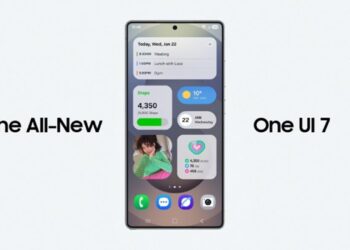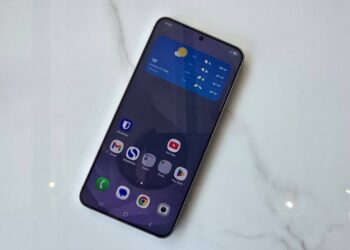When Samsung released the Galaxy S1 back in 2010, it was a groundbreaking device that set the stage for the company’s dominance in the smartphone market. With its sleek design, powerful hardware, and the introduction of Samsung’s TouchWiz interface on Android, the Galaxy S1 quickly became a favorite among tech enthusiasts. But while many remember it for these features, fewer know about a unique capability offered in some regions: the ability to watch live TV directly on your phone. Let’s dive into the full story of the Galaxy S1’s TV-tuning prowess and how it varied across different markets.
The rise of mobile TV in the early 2010s
In the early 2010s, the concept of mobile TV was a thing in several parts of the world. With digital TV standards being adopted globally, manufacturers saw an opportunity to integrate TV functionality into mobile devices. This was especially appealing in regions where commuting was common, and the idea of watching live TV on the go was highly desirable.
In Latin America, particularly in countries like Brazil, there was significant demand for mobile TV. The region adopted the ISDB-Tb standard (a variant of Japan’s ISDB-T standard) for digital terrestrial television broadcasting. Recognizing this opportunity, Samsung equipped some models of the Galaxy S1 with a digital TV antenna and tuner capable of receiving ISDB-Tb signals.
These models allowed users to watch live, over-the-air TV broadcasts directly on their phones. The integration was seamless — users could simply extend a small, retractable antenna from the device, tune into local channels, and enjoy live TV wherever they had reception. Below is an example.
@htcmagic.hype This feature was only available on the Latin American (i9000B) and Korean(M110S) Models
This feature was a significant selling point in Latin America, where mobile TV was a popular trend. It provided a unique way for users to stay connected to live events, news, and entertainment without needing a separate TV or internet connection. But the model of the Galaxy S1 with digital TV came at a pretty penny by the-then standards — a cool 1,036 euros or close to Kshs 150,000 in today’s value.
Samsung didn’t stop with Latin America. In Japan and South Korea, two other regions with strong mobile TV markets, Samsung also released Galaxy S1 variants with built-in TV tuners. These versions supported the ISDB-T standard in Japan and T-DMB (Terrestrial Digital Multimedia Broadcasting) in South Korea.

In these markets, mobile TV had been popular for years, and manufacturers like Samsung saw it as a must-have feature. The Galaxy S1’s TV capability in these regions was well-received, catering to consumers who valued watching live TV while commuting or during downtime.
The Galaxy S1 in other regions: A focus on smartphones, not TV
While the Galaxy S1’s live TV feature was a hit in Latin America, Japan, and South Korea, it didn’t make its way to many other regions, including Europe, North America, and most of Asia. Heck, the Galaxy S1 never made it to Kenya. There were a few reasons for this:
- Different TV standards: Europe, North America, and other regions adopted different digital TV standards (like DVB-T in Europe and ATSC in North America). Samsung would have needed to create different hardware variants for each of these regions, which may have been impractical given the market size and demand.
- Lack of demand: Speaking of, in many of these regions the demand for mobile TV wasn’t as strong. Consumers in these areas were more focused on the smartphone’s internet capabilities, apps, and multimedia features rather than live TV. The availability of streaming services, even in their early stages, also lessened the appeal of traditional broadcast TV on mobile devices.
- Focus on smartphone capabilities: In regions like Europe and North America, Samsung emphasized the Galaxy S1’s strengths as a powerful, versatile smartphone. Marketing efforts centered around its AMOLED display, Android OS, app ecosystem, and multimedia playback — features that were more universally appealing than a niche TV-tuning capability.
Chinese vendors: Bringing mobile TV to emerging markets
While Samsung was making waves with the Galaxy S1 in select markets, Chinese phone manufacturers were also tapping into the growing demand for mobile TV, particularly in emerging markets across Asia and Africa. During this era, mobile phone adoption was accelerating rapidly in Kenya, and unheard-of Chinese brands saw an opportunity to offer affordable phones with unique features, including live TV. I have memories of these huge slabs in people’s hands when in matatus, but I have little memory of the brand names. Don’t mind sharing some of them in the comments.
These Chinese vendors equipped their phones with analog TV receivers and extendable antennas, allowing users to watch live TV on the go. Unlike Samsung’s Galaxy S1, which relied on digital TV standards like ISDB-Tb, these phones often used analog TV signals, which were still prevalent around here at the time.
Comment
byu/masterof000 from discussion
inIndiaNostalgia
The inclusion of live TV on these devices was a major selling point, especially in regions where access to television was limited and mobile phones were becoming a primary source of entertainment and information. The combination of affordability and live TV made these Chinese-branded phones extremely popular, paving the way for what is now a market dominated by Chinese smartphone brands.
The legacy of the Galaxy S1’s TV feature
The inclusion of a digital TV tuner in select Galaxy S1 models remains a fascinating chapter in the history of mobile devices. It highlights Samsung’s strategy of tailoring its products to meet the specific needs of different markets, rather than adopting a one-size-fits-all approach. At the same time, it underscores the role that Chinese manufacturers played in democratizing mobile TV by offering this feature in affordable phones in emerging markets.
While mobile TV never became a global phenomenon, the Galaxy S1’s live TV feature was a unique aspect for many users in regions where it was available. It showcased Samsung’s willingness to innovate and cater to localized demand, a strategy that has helped the company maintain its leadership in the global smartphone market. This strategy continues to date. For instance, devices sold in the US often come with a Snapdragon chipset while the rest of the world gets Exynos chipsets. The Galaxy A series is another product tailored for select markets based on demand. Meanwhile, the relative success of Chinese vendors in offering mobile TV in emerging markets illustrates the diversity of consumer needs and the importance of regional customization in the mobile phone industry.
The aftermath: Decline of mobile TV and the rise of streaming
As streaming services like Netflix, YouTube, and Amazon Prime became more popular, the demand for mobile TV on smartphones waned. These services offered a more flexible and on-demand experience that aligned better with changing consumer habits. The rise of 3G, 4G and now 5G networks further accelerated this trend, enabling high-quality video streaming on the go.
Today, the idea of watching live TV via an antenna on a smartphone feels quaint, a relic of a transitional period in mobile technology. However, for those who owned a Galaxy S1 with TV capabilities, or a Chinese-branded phone with analog TV, it was a unique feature that set the device apart and added an extra layer of convenience to their daily lives.
A niche but memorable feature
The Samsung Galaxy S1’s live TV feature, available in select models for specific regions, was a niche but memorable addition to an already iconic device. It reflected Samsung’s commitment to innovation and its ability to respond to market-specific demands, setting the stage for the company’s future successes in the smartphone industry.

On the other hand, Chinese vendors played a crucial role in bringing live TV to a broader audience in emerging markets, showing that sometimes, the most valuable features are those that cater to the unique needs of specific regions.
While the feature may have faded into obscurity with the rise of streaming, it remains a curious and endearing footnote in the history of mobile technology — it reminds me of the days when seeing someone watching TV on a phone felt like a glimpse into the future.












